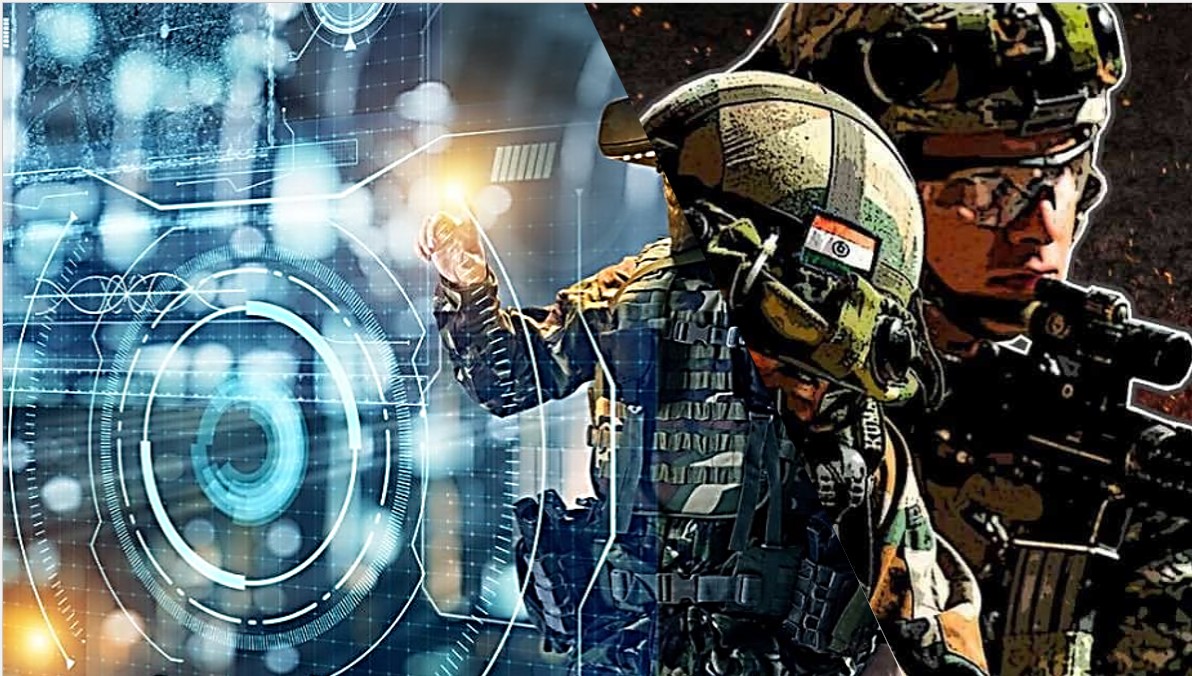
Artificial Intelligence (AI) And The Armed Forces

Let me begin on a personal note. In the late 1990s, the efforts did not always bear fruit as we trawled the forests in the upper reaches of mountains in Northern Kashmir, looking for militants. The information was scanty and often fell short of the near-mythical claims of ‘actionable intelligence’. And even when our best hopes of engagement came true, follow-up operations could be stymied by night’s opaqueness. And even if you heard the sporadic chatter among the terrorists, it was near-impossible to make sense or zero on their location using the rudimentary triangulation method.
The advent of AI is rapidly removing some of those infirmities. But the impact, of course, extends beyond counterinsurgency. Its potential for enhancing our defence forces’ abilities in the conventional realm is even more promising.
No article or book can do justice to commenting on AI’s shadow on military affairs. The swathe is too long, the spectrum too wide, and the complexities too daunting to be summarised in a few words. This article is a bare outline of the impact AI is having – and is likely to have – on the operations of defence forces, particularly in the Indian context.
The large pie of the immense influence of AI can be sliced in several ways. It has roles as a data cruncher in autonomous machines and the realm of cyber warfare. Or, it can be weighed for its potential contribution to strategic decision-making and operations, including logistics and training.
The foremost AI capability is handling mounds of data and rapidly constructing patterns that would lead to tangible deductions – a task that would challenge an army of human minds. The analysis of Satellite imagery, enemy artillery shelling data, networks of insurgent communications and complexities of logistics are a few examples of where AI can help in strategic and tactical decision-making. In internal security, AI can dive deep into the vast ocean of social media, CCTV footage and telephonic conversations to prevent terrorist attacks. It is well known that in the run-up to the 9/11 attacks, there was no dearth of information that pointed to the horrors that lay ahead but were missed because a sophisticated system of connecting inter-agency intelligence dots was not available. It could be argued that closer home, in months preceding the Kargil war, the shreds of information with R&AW, military and BSF intelligence, and IB would have yielded far different conclusions if AI had been the prime-mover of intelligence.
Since then, we have significantly started welding AI technology into warfighting. Under the tutelage of the Artificial Intelligence Task Force, the efforts gathered notable impetus in 2018. Since then, three flagship programs have evolved: Centre for AI and Robotics (CAIR) for close coordination to develop robotic technologies for the armed forces, AI for Net-Centric Operations (AINCO) – an umbrella body for knowledge base and more, and development of robotic combat vehicles that will replace human endeavour from some of the riskier and complex activities on the battlefield, e.g., sweeping latent minefields. The potential for extending the benefits to other areas is limitless; cyber attacks and countermeasures, more nuanced handling of healthcare databases, drone operations, training and logistics are some of the obvious choices.
Take cyberwarfare, for example. Attacks on the enemy’s military and civilian infrastructure, including communication, can destroy material and severely unhinge decision-making by the leadership. The impact will invariably be strategic, as in 2010 when the computer malware Stuxnet disrupted Iran’s nuclear program by targeting supervisory control and data acquisition systems and set it back by two years. In any interconnected economy, cyberattacks can debilitate the country, and if it comes during a time of conflict, the impact would be unimaginably deleterious. The converse is that the country should have robust systems to ward off similar forays by the enemy. Given our strengths in Information Technology, this is an area where the future focus of AI would yield out-of-proportion benefits.
The other area where AI can help cost-effectively achieve realism is training. The space for large-scale training for the field Army is shrinking in our country. Training for the Air Force and the Navy can be prohibitively expensive and equipment intensive. These infirmities can be addressed by dovetailing the AI technology with developing simulators for all facets of operations, including dogfights and submarine attacks. Several simulators are already in use – the engine of AI can progressively make them as close to battlefield realities as possible.
Arguably, the Air Force can be one of the prime beneficiaries of AI even in live operations. Several countries are developing unmanned aircraft that can assist air operations. The Northrop Grumman RQ-4 unarmed drone – the Global Hawk – can provide global all-weather, day or night intelligence, surveillance and reconnaissance (ISR) capability, even when communication links have been snapped, thus replacing human decision-making to some degree. Russia’s Sukhoi S70 and France’s Dassault nEoron are stealthy, autonomous UAVs that can function in medium-to-high-threat combat zones. Australia’s Loyal Wingman (in collaboration with Boeing) can fly alongside a piloted aircraft and take on attackers like an AI bodyguard. None of this would be possible without the central role of AI.
The use of AI by defence forces to facilitate logistics is an area pregnant with possibilities. Aspects such as preventive maintenance, cloud services for handling and computing data, supply chain management, medical aid including dealing with post-operation trauma and driverless resupply are some areas where AI can be invaluable support. The Beehive program of the corps of EME seeks to aggregate and analyse data of all repairs in its hundreds of workshops that can immensely benefit from AI and machine learning.
AI is an invaluable force multiplier in matters of internal security because it is here that the intrinsic strengths of AI are most needed daily. AI mimics some aspects of human intelligence and transcends human abilities to process voluminous and diverse data. Regarding pattern and speech recognition and data analysis leading to instant decision-making, AI becomes central to internal security. Killer robots are also on the drawing board for the conventional battlefield, but these would also have a role in internal security.
It is, however, nobody’s case that AI can completely replace humans. AI technology is only as good as the algorithm that drives it. ChatGPT and Bing’s less-than-perfect examples have demonstrated that we are far from producing AI that can perfectly surrogate human thinking, especially on the battlefield, where emotion and culture play a pivotal role. It is inconceivable that AI can achieve even a fraction of human ability in dealing with cognitive intangibles.
The use of AI by defence forces worldwide is already beginning to look like a game changer. But since it is a self-growing organism, no one can easily fathom the extent that it will occupy centre stage in tomorrow’s battlefield. Meanwhile, social scientists and economists are raising red flags over ethical issues and the possibility of AI driving people out of jobs. But similar fears were voiced at every step of the arrival of new technology – during the advent of industrialisation and the internet, for example.
AI is an idea whose time has come. The Indian Defence Forces should embrace AI technology and develop indigenous applications for optimum results in the battlefield of the future.
Disclaimer
The opinions expressed in this article are the author’s own and do not reflect the views of Chanakya Forum. All information provided in this article including timeliness, completeness, accuracy, suitability or validity of information referenced therein, is the sole responsibility of the author. www.chanakyaforum.com does not assume any responsibility for the same.
Chanakya Forum is now on . Click here to join our channel (@ChanakyaForum) and stay updated with the latest headlines and articles.
Important
We work round the clock to bring you the finest articles and updates from around the world. There is a team that works tirelessly to ensure that you have a seamless reading experience. But all this costs money. Please support us so that we keep doing what we do best. Happy Reading
Support Us





















POST COMMENTS (2)
Mohammad Adil Khan
Suresh